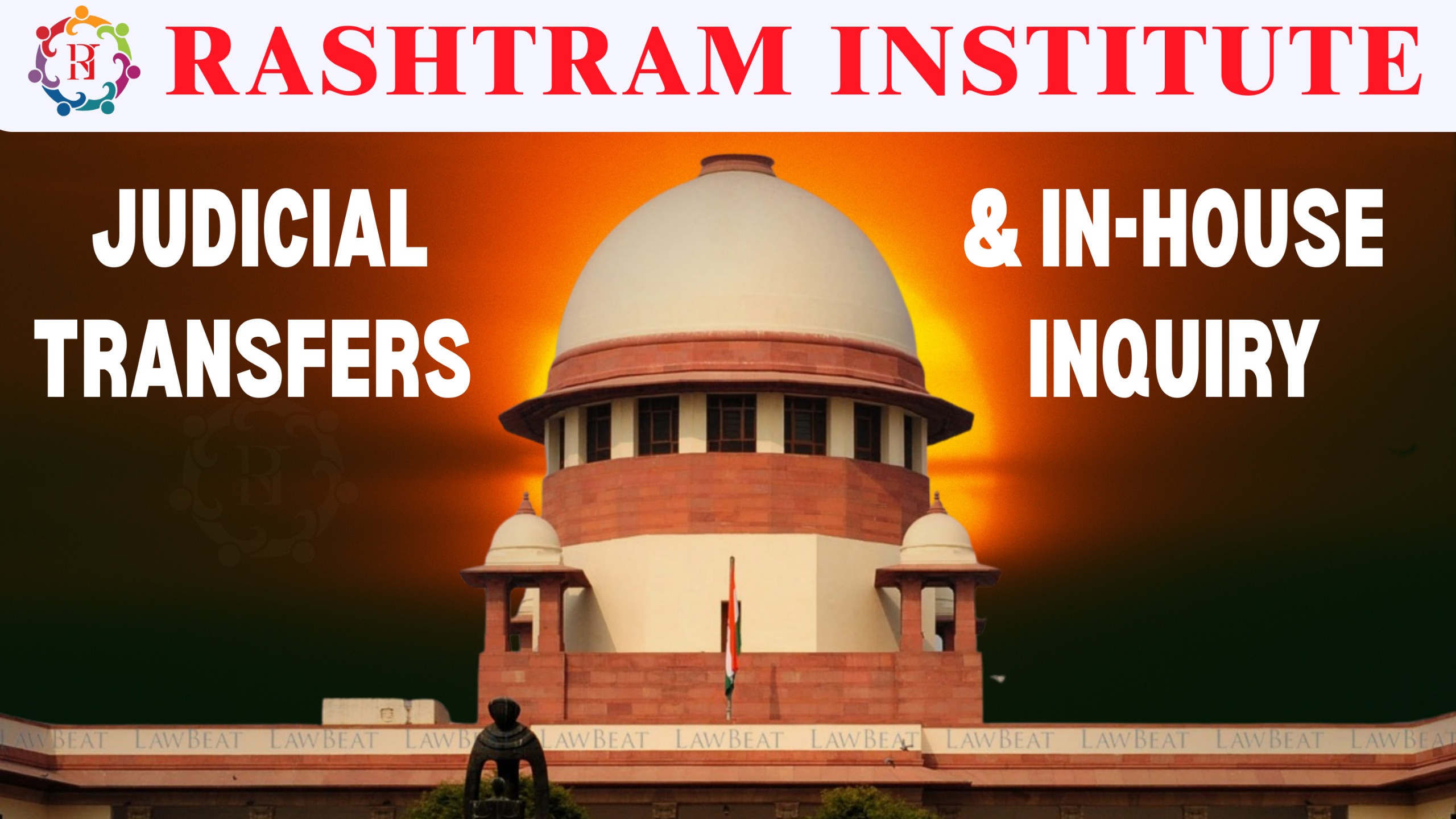Judicial Transfers & In-House Inquiry
Why in News?
The Supreme Court Collegium has recommended the transfer of Justice Yashwant Varma from the Delhi High Court to the Allahabad High Court.
- This came after reports of sacks of burnt currency found at his home.
- The Chief Justice of India (CJI) has also started an in-house inquiry into the matter.
What is a Judicial Transfer?
- Article 222 of the Indian Constitution allows the President to transfer judges from one High Court to another.
- This is done based on the advice of the Chief Justice of India.
- Consent of the judge is not needed.
Judicial Transfer Process in India:
- The Chief Justice of India (CJI) starts the process by proposing the transfer of a judge. His decision carries final authority.
- If a High Court Judge (not a Chief Justice) is being transferred, the CJI consults:
- The Chief Justice of the judge’s current High Court, and
- The Chief Justice of the High Court where the judge is to be posted.
- The CJI may also seek input from one or more Supreme Court judges familiar with the judge’s performance.
- If a Chief Justice of a High Court is being transferred, the matter is considered by the Collegium – the CJI and the four senior-most judges of the Supreme Court.
- Personal Factors Considered: The Collegium also reviews non-legal aspects, such as the judge’s health condition, family needs, location preference.
- Forwarding to the Executive: The Law Minister sends the Collegium’s recommendation to the Prime Minister.
- The Prime Minister advises the President, who formally approves the transfer.
- Once approved, the Department of Justice issues an official transfer order in the Gazette of India.
- The Chief Justices and Chief Ministers of the concerned states are informed about the transfer.
Removal of Judges:
Under Articles 124 and 218 , judges of the Supreme Court and High Courts can be removed by the President on grounds of “proven misbehaviour” or “incapacity”.
What is an In-House Inquiry?
- It is an internal process to check complaints against judges when the issue is not serious enough for impeachment.
When Did It Start?
- After a 1995 Supreme Court case: C. Ravichandran Iyer vs Justice A.M. Bhattacharjee
- The system was formally adopted in 1999
Steps in In-House Inquiry:
- Complaint is received by the CJI or a Chief Justice.
- If valid, a three-judge committee is formed (two CJs + one judge).
- The judge is given a chance to explain.
- Based on findings:
- Minor issue: Judge is warned.
- Serious issue: Judge may be asked to resign or retire.
- If refused, duties may be taken away or impeachment may be recommended.
Rashtram Institute
Rashtram Institute for Civil Services is destined to provide you the best curated content for civil services examination on both mains and prelims perspective. Follow us for more such content….
To register, call: 9964152111
Seats are filling fast — register today and step into the exam hall with full confidence!
Address: Jaynagar last, Bus Stop, Saptapur, Dharwad, Karnataka 580001





